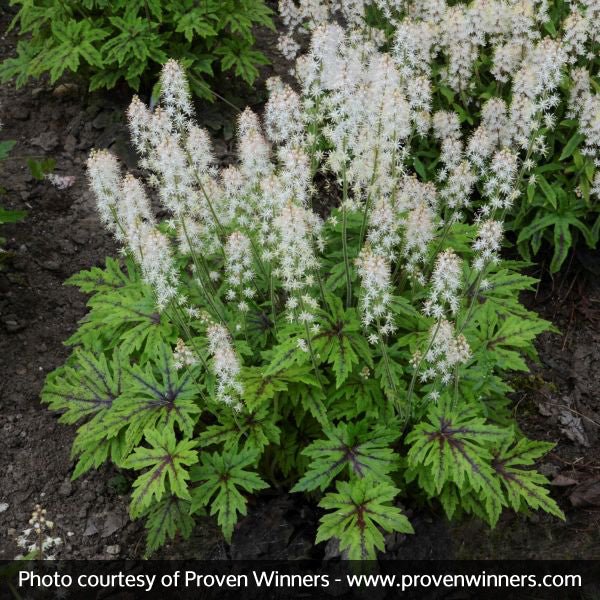How to grow foamflower – for a resilient and pretty flowering perennial that will illuminate shady gardens
Foamflowers can bring color to the dark corners of the yard
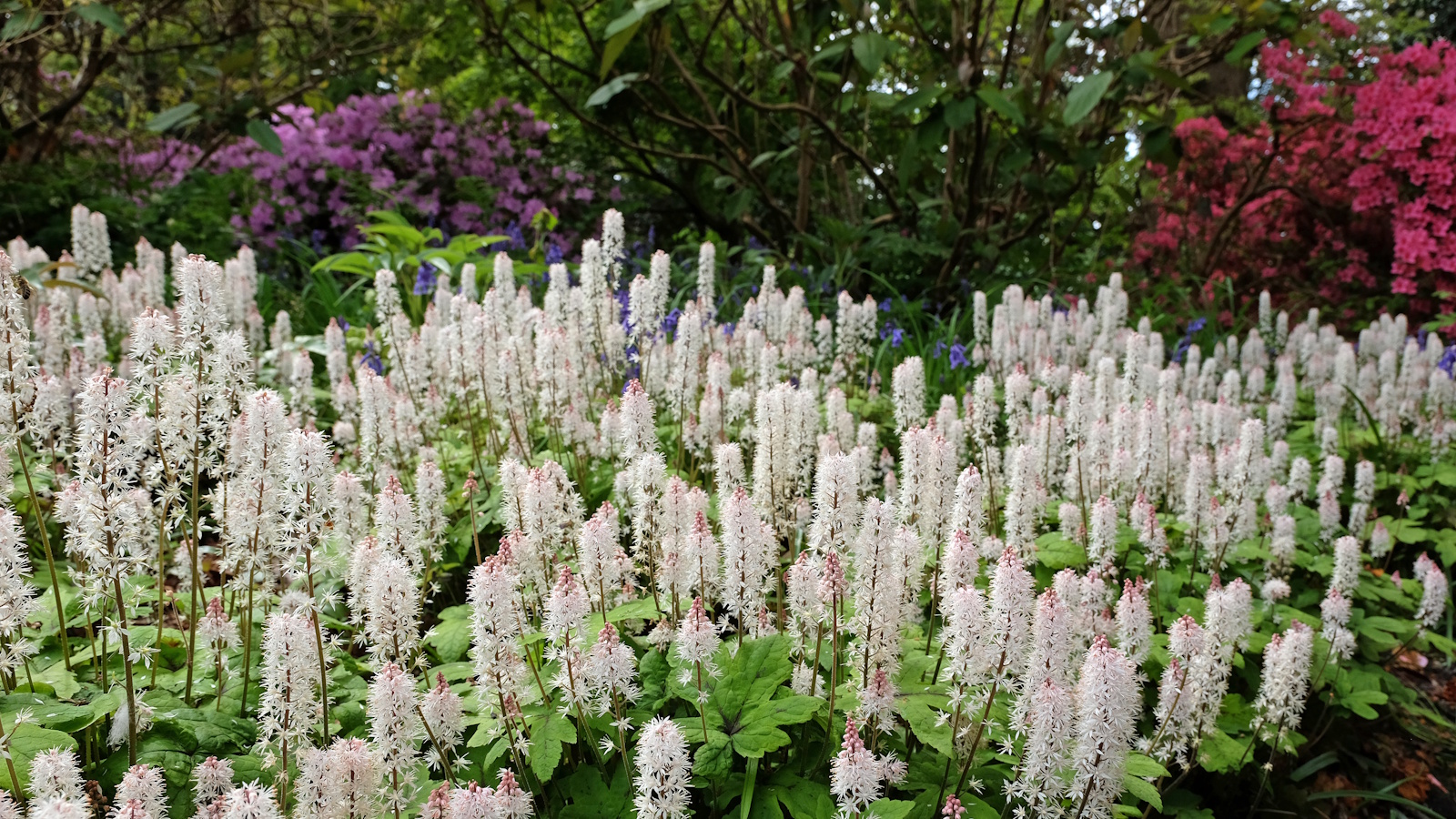

Foamflower, or Tiarella spp., is a native North American perennial that is found growing in the shady and damp woodlands of the eastern US. If you have been searching for a tough plant that can be used in dark and dank corners of your yard, foamflower is a good option that I can highly recommend.
As you might have guessed from the images here, this flower takes its nickname from the foam-like blooms that emerge in spring, appearing much like a soft white or pale pink cloud. I have grown this perennial in several shady plots, from urban container gardeners to large sprawling yards, and can testify both to its resilience and remarkable blooms that will light up any spring garden.
So, if you are looking for one of the best full-shade perennials to plant this year, learning how to grow foamflower is a good idea. Here, one garden expert provides all the information you need to know, including tips on soil, feeding and pruning.
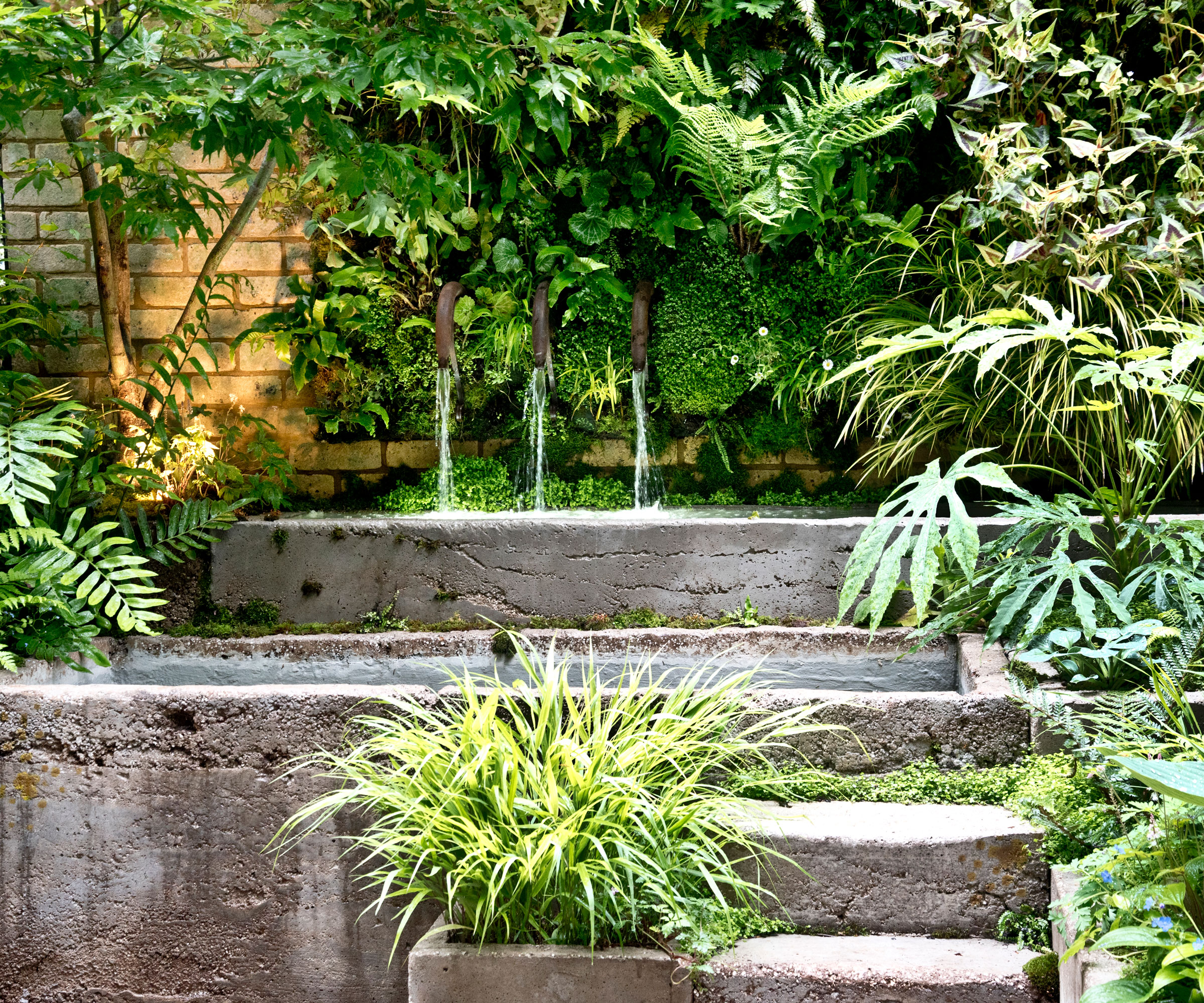
How to grow foamflower
I think that foamflowers are some of the best perennials that provide early spring color in shady backyards. And, who wouldn't want to fill borders and pots with these tiny flowers? Fortunately for gardeners, learning how to grow foamflower is relatively straightforward, so long as you follow a few simple steps.
Growing habits of foamflowers
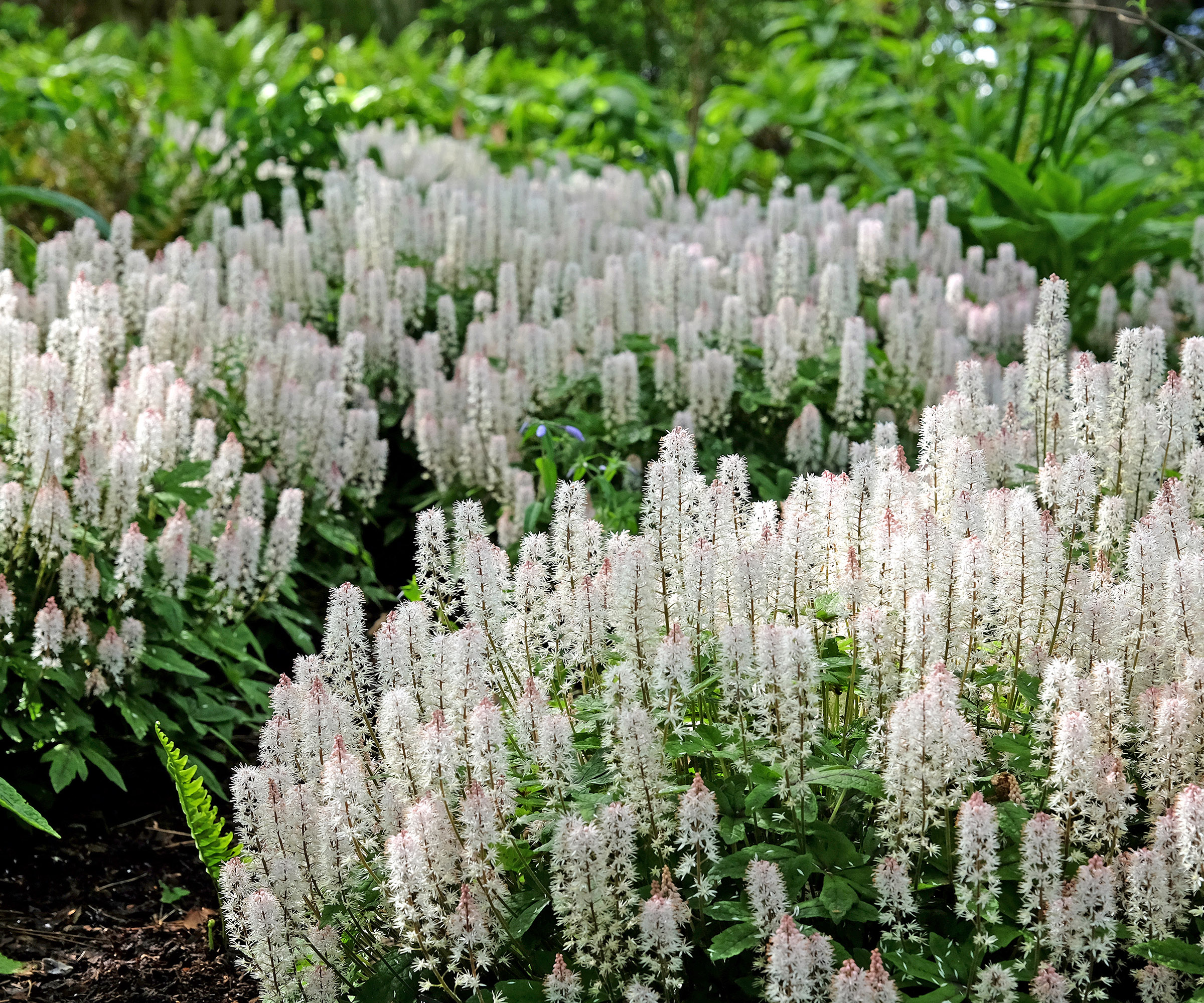
'Foamflower is a delicate-looking flower, but don't be fooled, this hardy woodland plant is tough,' says Tabar Gifford, plant expert and American Meadows master gardener.
'This native plant thrives in rich and moist soil, and is often considered a good ground cover plant for wet soil,' Tabar adds.
Foamflower plants can be grown down to US hardiness zone 3, making them a good shady plant option for cooler regions in the north. I would suggest planting in part-sun-part-shade in zones 3 and 4, whereas in sunny yards in zones 7 and 8, full shade is best.
Design expertise in your inbox – from inspiring decorating ideas and beautiful celebrity homes to practical gardening advice and shopping round-ups.
Live foamflower plants are available to order via Amazon.
'Foamflower is an excellent choice for gardeners seeking early-season blooms, as its pretty, foam-like spires of pink or white flowers appear in spring and last for several weeks, providing essential nectar for early pollinators like bees and butterflies.
'Beyond its floral display, the deeply lobed, evergreen foliage adds year-round interest, with many varieties featuring striking markings and seasonal color changes,' Tabar says.
'In general, foamflower is pest and disease resistant, though it does not tolerate prolonged drought. Slugs and snails may occasionally nibble on the foliage, but overall, its astringent leaves make it unpalatable to most pests, including deer and rabbits.'
You can also try growing foamflowers from seeds, sowing indoors a few weeks before the last frost, or outdoors in May or June as the evening temperature rises.
Foamflower seeds are available to order from Amazon.

Tabar Gifford works as an American Meadows Master Gardener, and has a lifelong love for gardening and nature. With a background in environmental studies and sustainable community development, she enjoys combining her horticultural expertise with a commitment to education.
Care guide for foamflowers
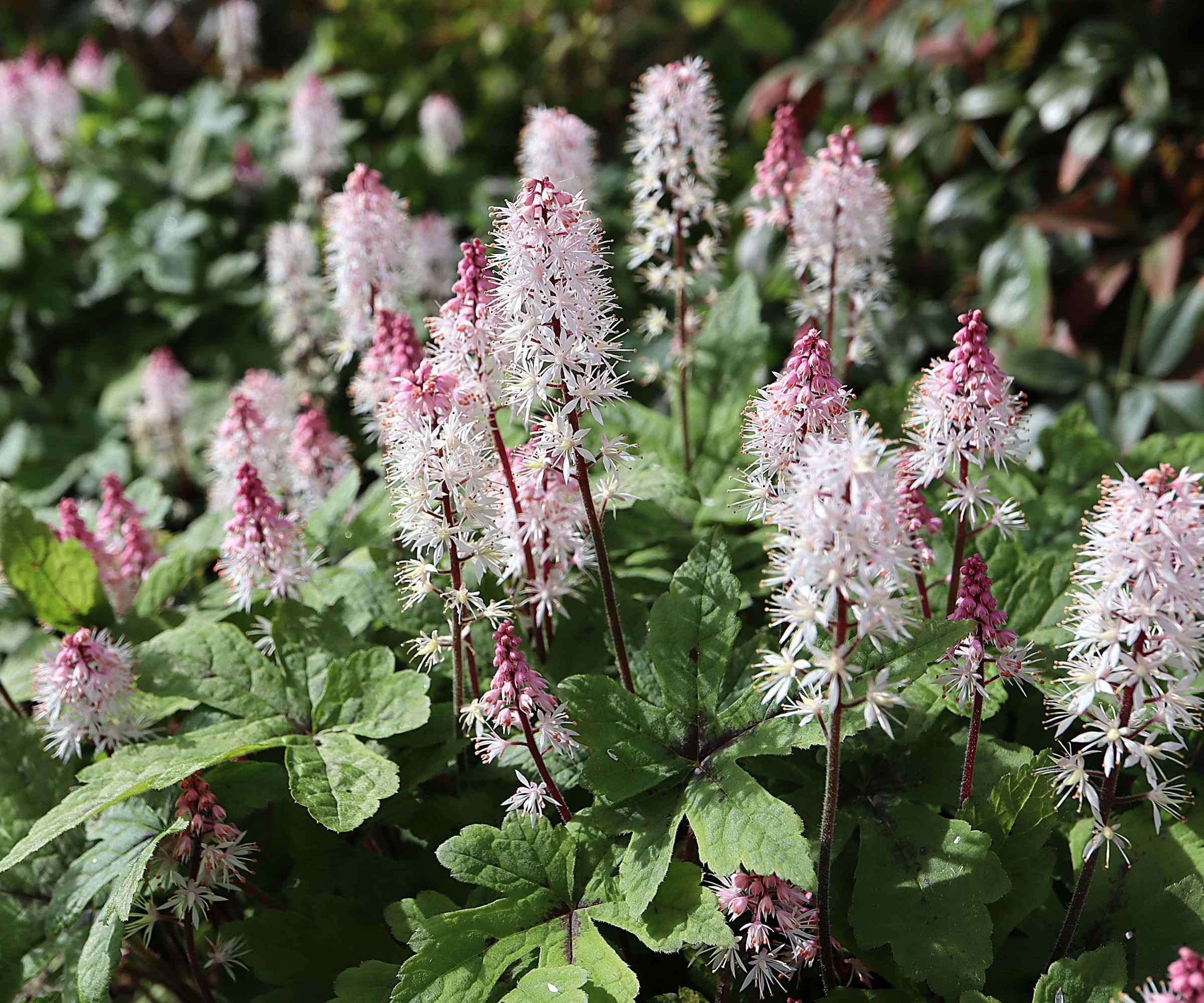
Soil: Plant foamflowers in moist but well-draining soil. As woodland plants, they enjoy moist, fertile soil, the likes of which you find in a forest. However, drainage is also important, as they do not like sitting in water for extended periods. To help improve soil structure, mulching is a good idea. Try something like this organic premium mulch from Walmart.
Light: In cooler regions, these are part-shade perennials, doing best in places where they will enjoy a couple of hours of sunshine each day. However, in southern areas with hot summers, grow foamflowers in full shade, where their foliage will be protected from the afternoon sun.
Watering: Foamflowers need evenly moist soil. While they can withstand a week or two without water, they do best in borders that are consistently moist but not waterlogged. To help your new plants settle, be sure to complete some deep watering in the first year.
Fertilizing: In my experience, it is not really necessary to feed foamflowers. With annual mulching, they should not need any additional fertilizer.
Pruning: Deadhead your plants at the end of spring, simply snipping the flower stems down to the base to maintain a neat and tidy appearance. In mild areas, the foliage will remain evergreen, although yellow or brown leaves can be pruned at any time.
Toxicity: Foamflowers are not considered toxic to humans or pets.
FAQs
Can I grow foamflowers in pots?
Yes, foamflowers can be grown in pots. However, remember that these are woodland plants, so they require consistent moisture and shade. For this reason, 'use a moisture-retentive but well-draining mix, and keep the soil consistently damp, especially during dry spells,' Tabar advises. In addition, it is best to avoid growing them on overly sunny terraces or patios, where summer temperatures can prove challenging.
'Once your foamflowers are established by year two or three, you can easily divide clumps in early fall,' Tabar continues. 'Simply lift and slice the perennial, ensuring that each new clump has foliage and roots, and replant elsewhere in the yard.'
For more information, see our guide on how to divide plants, to easily grow your perennial collection (at no cost!) this year.
Shop planting accessories

Thomas is a Content Editor within the Gardens Team at Homes and Gardens. He has worked as a professional gardener for both public spaces and private estates, specializing in productive gardening, growing food and flowers. Trained in Horticulture at the Garden Museum, he has written on gardening and garden history for various publications, including The English Garden, Gardens Illustrated, Hortus, The London Gardener and Bloom. He has co-authored a Lonely Planet travel book, The Tree Atlas, due out in 2024.

